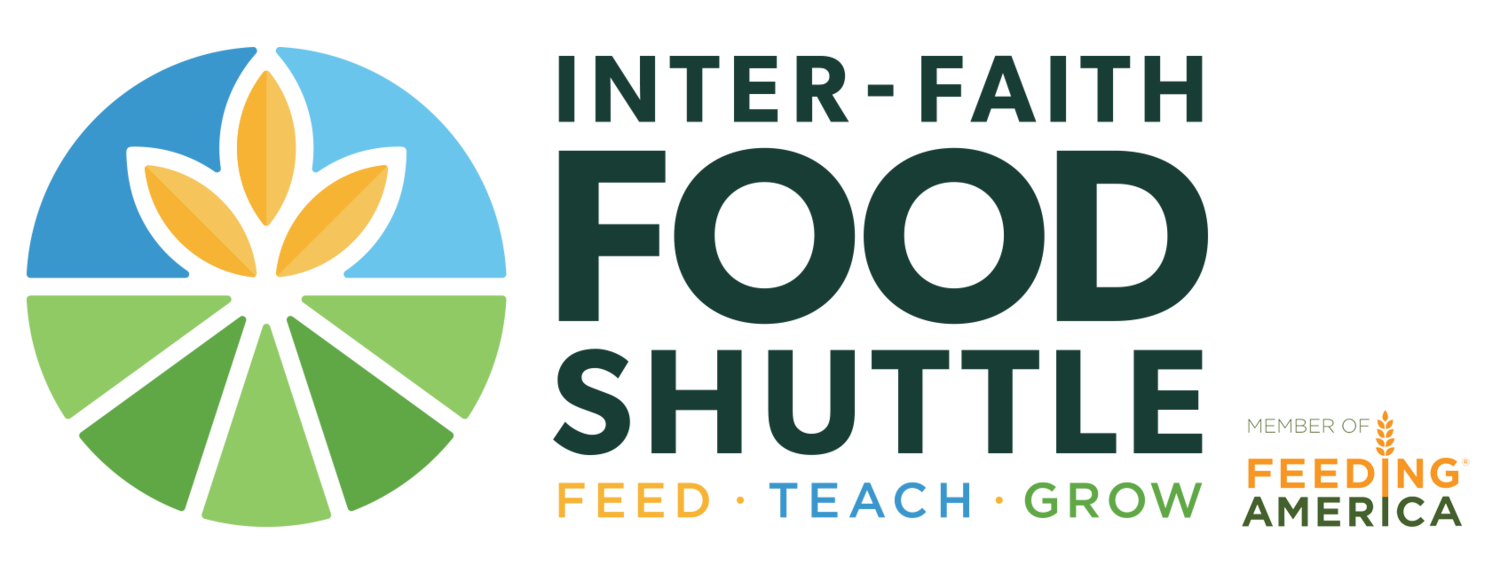This month the White House released a new report overviewing the problem of food insecurity in the United States and the important role that Supplemental Nutrition Assistance Program (SNAP) plays in addressing it. Read the White House's report here.
Originally known as the Food Stamp Program, SNAP is the largest program in the domestic hunger safety net. SNAP offers nutrition assistance to millions of low-income Americans by supplementing household food budgets.
Inter-Faith Food Shuttle enjoyed reading the White House's SNAP report. We are always glad to see awareness brought to hunger - and especially programs that successfully fight hunger. Here are 3 findings we would like to highlight for you:
These are a few of our favorite things
1. "The large majority of SNAP recipients are children, working parents, elderly Americans, and people with disabilities."
The report finds that 75% of recipient households have a child, an elderly member, or a member with a disability. Furthermore, 67% of the total value of SNAP benefits go to households with children as these households on average receive larger benefits than households without children.
A majority (64%) of SNAP recipients are unable to work because of their age (they are children or seniors over 60) or because of a disability.
2. Among working-age adult recipients "a full 57% are either working or are unemployed and looking for work."
Among working-age adults, 22% are exempt from work due to disability, and others are not working because they are the primary caregivers of young children or a disabled family member.
Furthermore, among SNAP households with at least one working-age, non-disabled adult: more than 80% work in the year before or after receiving SNAP benefits. According to the report, this suggests SNAP provides needed help to working families who are between jobs and to those who are working but whose earnings are insufficient to make ends meet.
3. "SNAP has also played an important role in lifting millions of people—especially children—out of poverty for the past five decades."
SNAP benefits lifted at least 4.7 million people out of poverty in 2014—including 2.1 million children. SNAP also lifted more than 1.3 million children out of deep poverty, or above half of the poverty line.
There's an important (and unappreciated) way that SNAP supports work: through positive long-run impact on self-sufficiency—especially when SNAP reaches needy children. Research discussed in this report shows that among children, receipt of SNAP benefits can lead to improvements in short-term health and educational outcomes. Both health & educational improvements can impact long-run earnings and labor market participation as the children enter work-force age.
Beyond SNAP
As always (until hunger is eradicated), there is more that can be done.
"The report also shows that SNAP is successful, yet benefit amounts should be increased to further bolster the program’s critical role," said Food Research & Action Center (FRAC) president James Weill. "Congress must act so that more people living in struggling households can get the nutrition they need to thrive."
Until Congress does act, nonprofits like Inter-Faith Food Shuttle work hard to fill gaps. Here's a look at different ways IFFS is tackling food-insecurity for children, seniors, and the un(der)employed:
BackPack Buddies
BackPack Buddies provides children from food-insecure homes with healthy weekend meals during the school year. The children, selected by school principals, guidance counselors, and supervisors of various after school programs, receive a backpack containing six balanced meals and two healthy snacks at the end of every week. Local corporations, civic groups, and individuals help by holding a food drive, and packing bags, or becoming an official sponsor.
School Pantries
IFFS School pantries provide fresh produce (provided by SNAP) and non-perishable foods to students & staff at 11 schools in low-income neighborhoods in Durham and Wake Counties. Pantries are run by volunteers and allow children and their families to choose foods for home consumption where they live and work. These accessible locations overcome transportation limitations that might otherwise prevent visiting a food pantry. You can support school pantries program here.
Grocery Bags for Seniors
The Grocery Bags for Seniors program supplements the fixed incomes of our older community neighbors through door-to-door distribution of fresh produce and groceries. You can volunteer to pack grocery bags full of fresh produce and healthy snacks and deliver to a senior housing community.
Mobile Markets
IFFS Mobile Markets are direct distributions of groceries and fresh produce in low income neighborhoods, designed to meet people at their point of need. We bring a refrigerated truck full of food (40% fresh produce), to a community center, church, or health clinic. We set up a temporary market where folks who need food can “shop” for free and choose the foods they enjoy. You can volunteer with a Mobile Market.
Culinary Job Training Program
Culinary Job Training Program promotes self-sufficiency by addressing a root cause of hunger: lack of income. The program teaches culinary skills to adults experiencing life challenges so they can gain employment in the food service industry. The eleven-week hands-on course is taught by professional chef Terri Hutter and her culinary staff, as well as a case manager who coaches participants in life skills. In addition to learning hands-on cooking techniques and ServSafe food safety procedures, students learn employment skills, stress management, and basic nutrition. You can support the program here.
Further SNAP report reading: New CEA Report Finds that SNAP Benefits are Crucial for Families but Sometimes Inadequate [/box]







